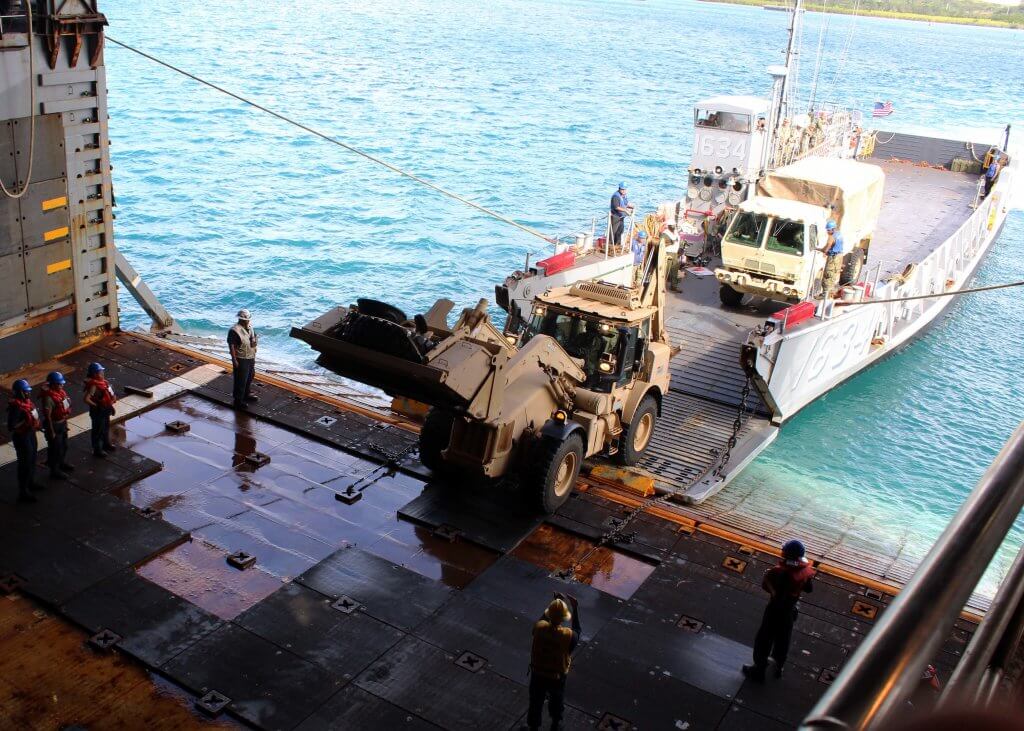Mark Scott was looking to “get in touch with his roots.” In 1997, the 20-year-old packed his bags and left the U.S. mainland for the island of Guam, the U.S. territory where his mother was born and raised.
Though known for its hospitable culture, Guam offered Scott a harsh welcome. Typhoon Paka tore through the island shortly after his arrival, greeting him with winds exceeding 200 mph, destroying hundreds of buildings and leaving tens of millions of dollars of damage in its wake.
“All four walls sounded like they each had their own freight train ripping by,” Scott said. “My cousin could not hear me if I yelled across the small living room.”
What shook Scott most, however, wasn’t the tropical cyclone, but the response of the people.
“Instead of rioting and looting, I saw people out in their neighbors’ yards helping clean up … breaking out their guitars, pulling the meat from their freezers before it could go bad to barbecue it and share it with their neighbors,” he said. “I thought, ‘This is the kind of place you want to be around.’”
Scott never left. Today, he serves as a captain in the Guam Army National Guard, a public affairs officer at the forefront of typhoon-response efforts.
Each year, from June to December, Scott and the rest of the Guam Guard stand alongside their partner agencies in anticipation of the next big storm. And while typhoon season is unpredictable in what it might bring to Guam’s shores, one constant remains – the sense of calm and community among its people.
“That culture and history, it’s in our blood,” Scott said. “And it bleeds into our National Guard.”
Disaster response is at the center of the Guam Guard mission. In that respect, it’s hardly unique. The California Guard, after all, responds to devastating wildfires throughout the year. But unlike mainland Guard forces, Guam and its residents are held hostage by their geography.
RELATED: Annual training gets guardsmen ‘back to the basics’
“We cannot evacuate,” said Landon Aydlett, warning coordination meteorologist for the National Weather Service in Guam. “We just have to hold on and let it pass.”
Aydlett has worked closely with the Guam Guard over the past several years, facilitating much of the training and communication between Guard members and other agencies, and witnessing the Guard in action during recent typhoons.
“They are often first on the scene,” Aydlett said. “They often have no clue what kind of conditions they are going to touch down in and what capabilities they are going to be working with. They just show up to deal with all of it in full force.”
Much of the Guam Guard’s focus during a typhoon is on recovery operations. To ease communication and delivery of goods, Guard engineers will conduct route clearance, removing trees and debris from the island’s roadways. To prevent gridlock, they often work traffic control points and direct newly homeless residents to temporary shelters, which are often staffed by the Guard, as well.
In 2018, Mother Nature decided to test the Guam Guard’s mettle. Not only did the island experience Typhoon Mangkhut in September of that year, but one month later Super Typhoon Yutu devastated the nearby island of Saipan, with wind speeds nearing 200 mph.
“What was unique was the magnitude and intensity of the storm,” Aydlett said of Yutu, a category 5 super typhoon, which leveled even some concrete structures. “It became clear the National Guard were going to be first on the ground for recovery efforts.”
Not long after Yutu struck Saipan, more than 100 Guam Guard personnel and about 20 of their excavators, dump trucks and similar vehicles loaded onto U.S. Navy vessels and sailed for Saipan.
“That’s really where the Guam Guard got to flex our muscles,” Scott said. “It was the first time we got to mobilize regionally on a humanitarian mission … We did a lot of route clearance because food and water couldn’t be delivered, so debris clearance was first and foremost.”
The Guam Guard later turned to rebuilding efforts, including deploying an Air Guard squadron of engineers to help with roofing and other construction projects.
As another typhoon season approaches, the Guam Guard remains in regular contact with its partner agencies, working to encourage preparedness among the island’s residents. It’s not a tough sell.
“It’s interesting to see the society here mobilize almost like the National Guard would. It’s almost like everybody has their standard checklist to go by in getting ready,” Scott said. “We don’t have to swim upstream to spread our message of readiness. There’s a real sense of unity.”

